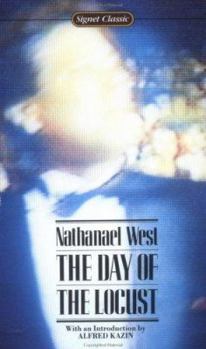The Day of the Locust
Select Format
Select Condition 
Book Overview
Customer Reviews
Rated 5 starsHollywood = Dante's Inferno ????
....To read Nathaniel West's description, it would seem so. Every character in this novel of 1930s Hollywood is a greedy scoundrel. Every character is out for him/herself. Everyone's a sinner, and it's absolutely delicious. I love novels with very eccentric, flamboyant characters. The kind of characters who perform on a dime. Faye, the main female character shakes, dances, gyrates, sings....for any audience, no audience...
2Report
Rated 5 starsA literary Molotov cocktail
"The Day of the Locust" is about the strange, disparate people that invariably get drawn to Los Angeles in the 1930's, a time when studios put out assembly-line low-budget movies and employed revolving crews of extras, writers, and various technicians. The novel seems influenced by Sherwood Anderson's "Winesburg, Ohio" in its portrayal of "grotesques," emotionally or behaviorally defective people on the fringe of society,...
1Report
Rated 5 starsBelongs on the 100 best novels list
Now I know why Flannery O'Connor so admired West. His prose is crystal clear, his craft virtuoso. His characters, however ugly, are utterly compelling and tragic. There was simply no stopping them. They would hang on to their delusions even if it destroys them. And then there are the people with no hope whatsoever, existing just for surface pleasure and materialism. Tod, the 'artist', tries to help these people, and nearly...
2Report
Rated 5 starsWest's finest novel
I've read all of West's other novels - The Dream Life of Balso Snell, A Cool Million, Miss Lonelyhearts - and all three seemed to miss something that is hard for me to explain. A little two-dimensional, a little hollow. Neither the characters nor the novels themselves seemed to be totally fleshed out. But The Day of the Locust is different. And ultimately I think it is on this novel that West's reputation will either...
0Report














